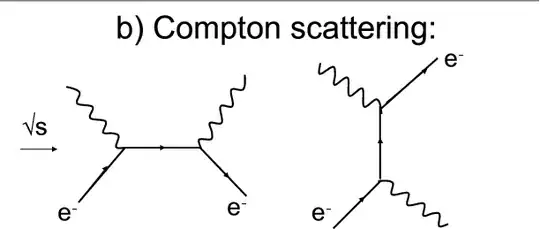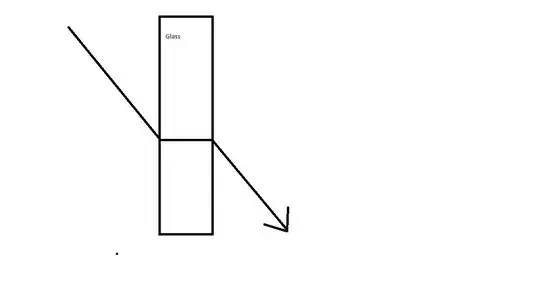If a single photon passes close enough to a star, the gravity will diverts its trajectory. What causes a photon to divert its trajectory as it passes a sharp edge or the boundary of two mediums?
5 Answers
Photons are inherently relativistic and can only be properly described using quantum field theory. However in situations where photon number is not changing we can describe them using a single photon wavefunction in the same way as we describe any particle in non-relativistic quantum mechanics.
When we do this we just get a plane wave as described by Maxwell's equations. So the wavefunction for a (delocalised) photon propagating through some medium is just the same plane wave that we get from classical electrodynamics. The refraction at a boundary is due to the requirement that this wavefunction be continuous across the boundary.
There is a certain amount of fudging in this argument. We take the group velocity of the wave to be:
$$ v = \frac{1}{\sqrt{\epsilon\mu}} $$
as in classical electrodynamics, and it's the change in the permittivity and permeability between the two media that causes the refraction. However the constants disguise a complicated interaction between the photon and the electrons in the media. Strictly speaking the photon and the media become entangled due to the interaction and we have to consider a global wavefunction covering both. In cases where the interaction is strong this gives us a quasiparticle called a polariton. However in most cases the interaction is weak and the photon wavefunction remains well described by a plane wave with the interaction rolled up into the relative permittivity and relative permeability.
- 367,598
Another view:
Photons build up the classical electromagnetic field with its diffractions and refractions in a complex manner, in a superposition of their wavefunctions so that the classical behavior arises .
Single photons interact quantum mechanically. For a refractive medium there must be transparency, and transparency means that images and colors are retained, more or less, i.e. elastic scatters. This means that the photon cannot be scattering with the ~ $1^{23}$ molecules of the gas or water or crystal, because the coherency of images will be lost. Thus it has to exchange virtual particles with the whole lattice describing the transparent medium it scatters upon, and quantum mechanics gives a probability of scattering.
At the surface between two media, the electrons are virtual exchanges , and photon in and out must have the same energy. The mathematical probability if calculated , will give high probability for a single photon to scatter in the direction of the optic ray that zillions of such photons will build up macroscopically. There is continuity in the mathematics between quantum: photon, and classical:light.
In building up the classical wave this probability of scattering in a given direction is high in the direction given by the classical refraction optical ray, and so the classical light built up keeps the image coherence .
See my answer here on a similar question for links.
- 236,935
The bending of the path of a photon passing a star is not due to the photon crossing a boundary. It is due to gravity, and the gravitational field is continuously distributed in the space surrounding the star. The photon does not need to pass close to the star for its path to be bent; it's just that the amount of bending is too small to measure unless the photon passes relatively close to the star. Note that most gravitational lensing events have involved galaxy clusters, on the order of a hundred million light years across.
Similarly, the wavefunction of a photon is continuously distributed over a very large area, even though it is only detected by its interaction with a single atom or molecule. For example, light from a laser might spread over an angle of, say, 0.01 degree. At the range of a hundred light years, the beam has spread to over nearly 0.2 light years wide: nearly 200 million times wider than the Sun. In a coherent laser,the wavefunction of each photon in the beam is spread out over the full width of the beam. Because they are not emitted coherently over a large aperture like the photons in a laser beam, wavefunctions of photons from distant stars or galaxies are spread out over much wider angles than the photons in a laser beam.
The bottom line: The effect of gravity on photons as they pass a star can be understood without recourse to quantum mechanics.
- 25,240
- 3
- 32
- 81
Of course John Rennie and Anna V are correct, but it seems that neither is answering your question, how does a photon get around the edge of two mediums in an angle.
Now what you think is that one photon will scatter off one atom the same way as a herd of photons (the EM wave) scatters off a herd of atoms (the medium).
One single photon will scatter off one single atom in a straight line.
You think that the photon just scatters and follows in a straight line, that is not true. The probability distribution of the photon is described by its wavefunction, and the photon gets scattered in every direction. Why do we see it then follow a straight line after scattering? Because that has the highest probability in the wavefunction. Nothing else is acting on the photon, only the atom it scatters off.
It does not have to do anything with gravity that the photons go in an angle at the edge of two media.
The single photon can be scattered off in any direction at the edge of two media, it might get reflected or refracted. What will decide? The atomic and molecular structure of the new medium, and the wavefunction.
So for a single photon, it might not follow the same angle as a herd of photons. Why? Because a herd of photons will scatter differently then a single photon.
A herd of photons will scatter off a herd of atoms differently. Why? Because you do not consider the effects scattered photons have on each other.
What happens when a herd of photons gets scattered off a herd of atoms is that the photons get scattered in every direction, described by the wavefunction. Now the photons scattering will have an effect of the other photons, and some directions will cancel out.
This canceling out will cause the photons to be scattered in only one direction. This is the least probable direction that is canceled out.
In case of a mirror, it is the opposite, in case of glass it is the same as the original direction.
The photons get scattered not only at the edge of two media, like air and glass, but they get scattered as they move through glass, they get scattered on the layers of atoms.
Your question is on the angle at the edge. The edge has a big difference between the two medias density and atomic and molecular structure, that is why the angle is big.
Why is light traveling in a straight line?
It only travels in a straight line in vacuum (and no gravitational field).
Light does not travel in a straight line in a dense medium like glass, only if the density of the glass is the same.
There are parts in glass where density is different and light will not travel in a straight line there. For the same reason why it travels in an angle at the edge of two media, that have different density.
Now why does light change its path when the density changes, and the atomic and molecular structure changes?
It is because when the herd of photons get scattered off a herd of atoms, the photons cancel out each other in some directions.
Now what directions they cancel out depends on the atomic and molecular structure of the media.
When light travels from air to glass, the atomic and molecular structure of glass will make photons get scattered off in one direction (for most of the photons). This angle will be different from the direction light traveled in air, because the atomic and molecular structure of air made light scatter in another direction.
It is because the atomic and molecular structure of air makes photons cancel each other out in a different angle then glass makes them.
The two different media are not in a covalent bond. Their atoms and molecules are not arranged together to make light go in the same direction, and photons to get scattered in the same direction.
That is what you see when light travels from air to glass, that the air atoms and molecules are not in a covalent bond with glass, and they can move separately, they are arranged in a separate direction that will make the photons get scattered in a different angle. The directions that cancel out will be different, because the atoms and molecules of air and glass are not in a covalent bond and are not arranged in the same direction.
But the difference between the angle between air and glass is not random. When light enters glass from air, it will have the same angle as when it exits. But you can see that the thicker the glass, the more it will shift the image, You can see that by removing glass from its frame and at the edge of the glass you will see the image is shifted compared to the image coming in air.
The change in angle is not only at the edge of two different media, but any two media that is not in a covalent bond.
- 30,008
What causes a photon to divert its trajectory as it passes a sharp edge or the boundary of two mediums?
The trajectories of photons behind sharp edges are distributed into a swelling intensity. Even photons, emitted one after another, will be distributed in the interaction with sharp (thin) edges in the same manner as a ray of photons.
John Rennie pointed out, that the interaction between the photon and electrons on the edge could be described as a global wave function (bolded from me):
So the wavefunction for a (delocalised) photon propagating through some medium is just the same plane wave that we get from classical electrodynamics. The refraction at a boundary is due to the requirement that this wavefunction be continuous across the boundary... However the constants disguise a complicated interaction between the photon and the electrons in the media. Strictly speaking the photon and the media become entangled due to the interaction and we have to consider a global wavefunction covering both. In cases where the interaction is strong this gives us a quasiparticle called a polariton.
As well as a crystal bend X-rays into spots of intensity, the interaction between the photons electric field and magnetic field components and the surface electrons field components has to be a quantized interaction due to the resulting intensity distribution (fringes) on the observation screen.
- 10,980

